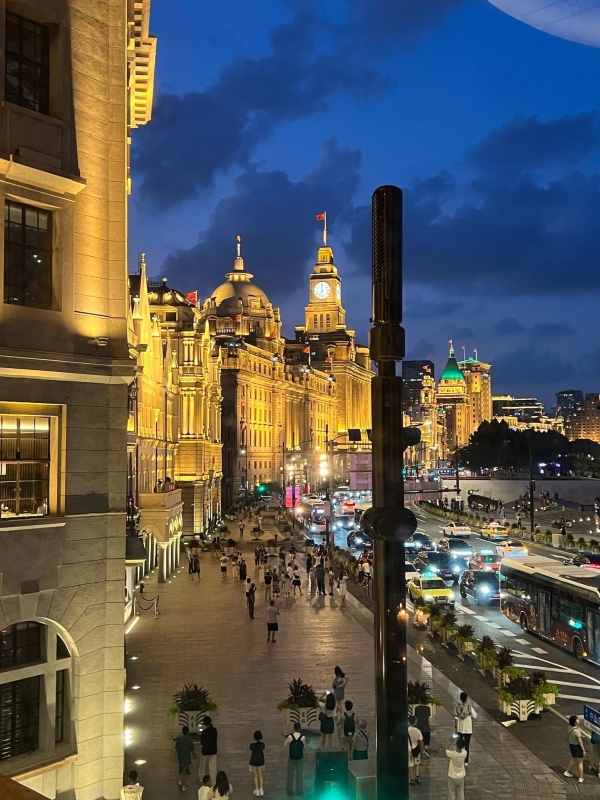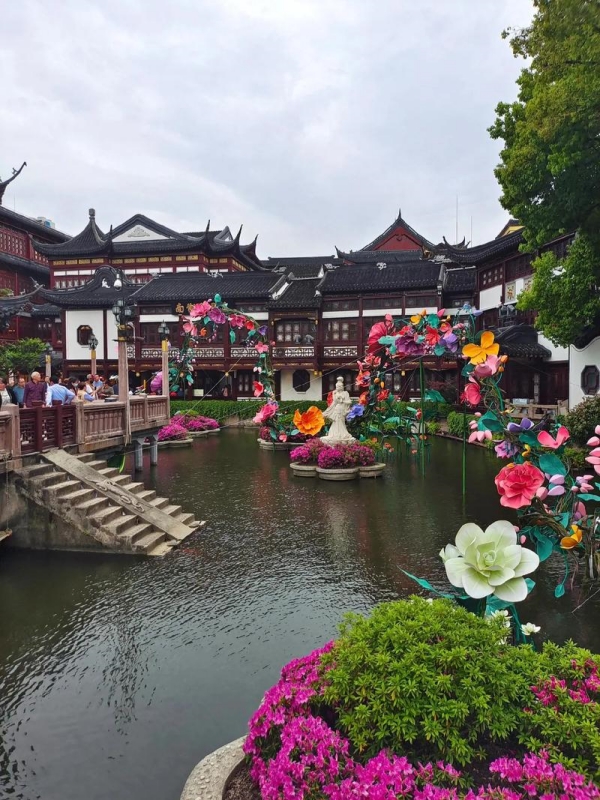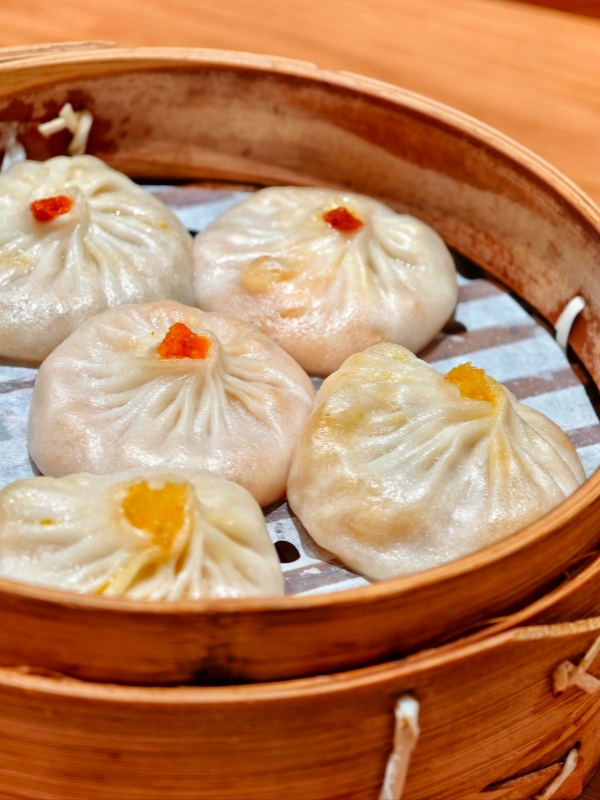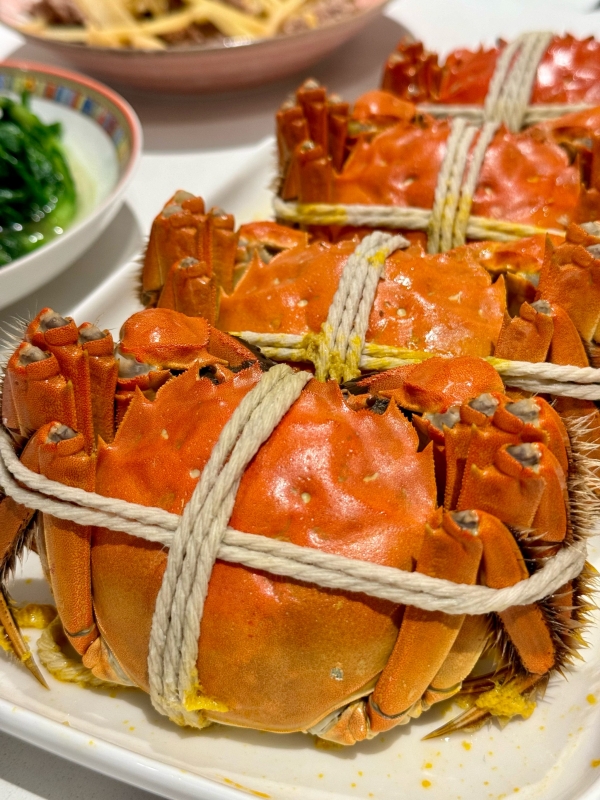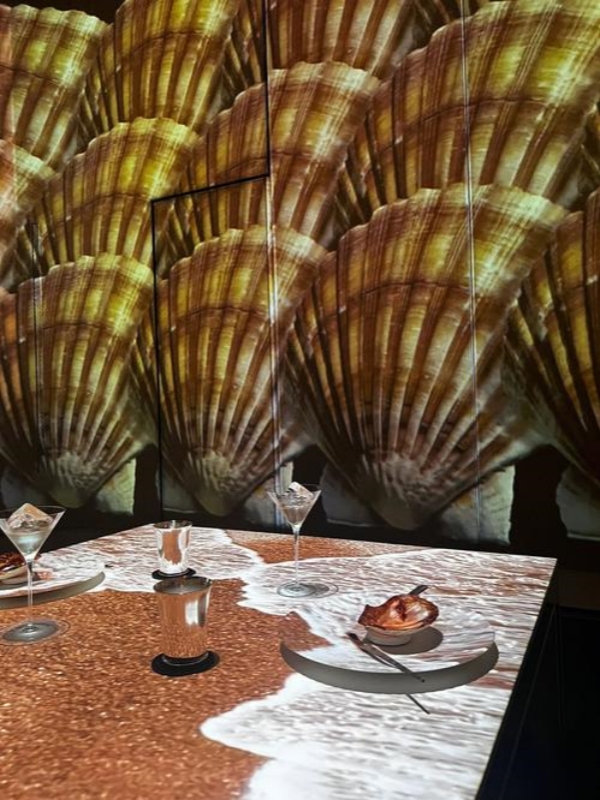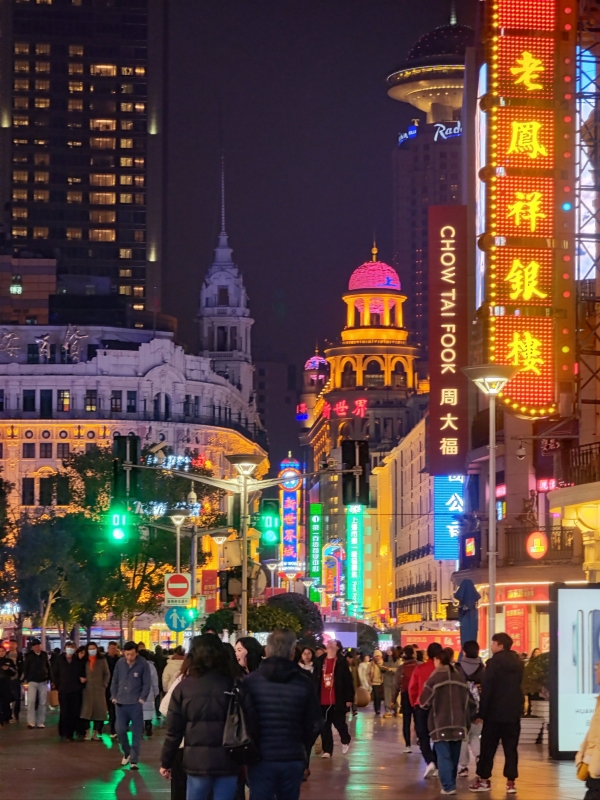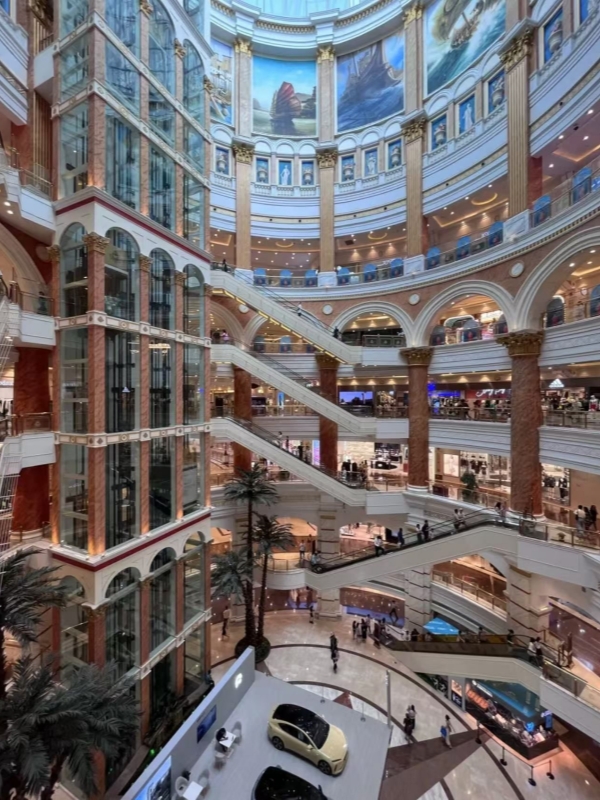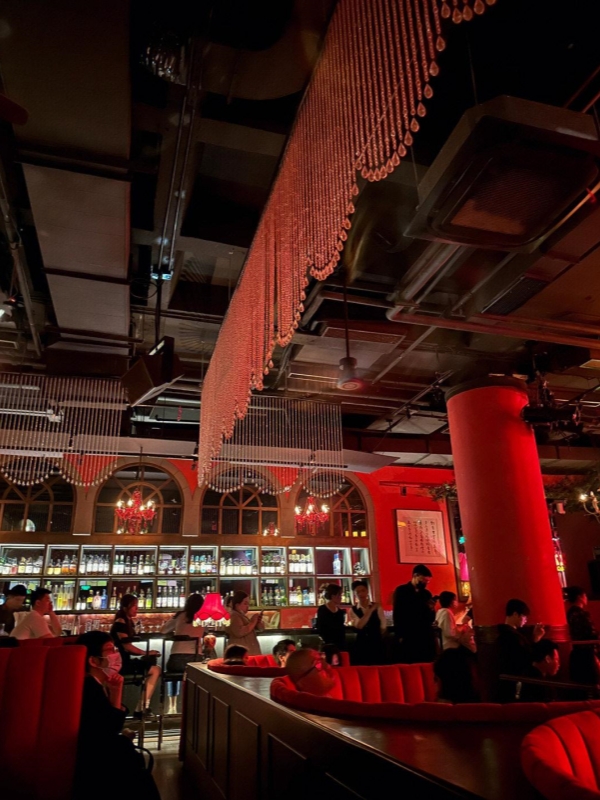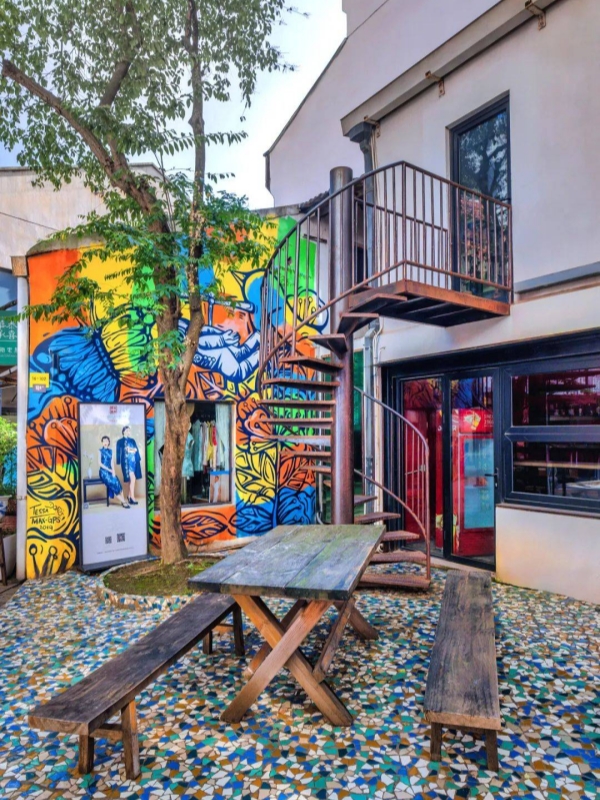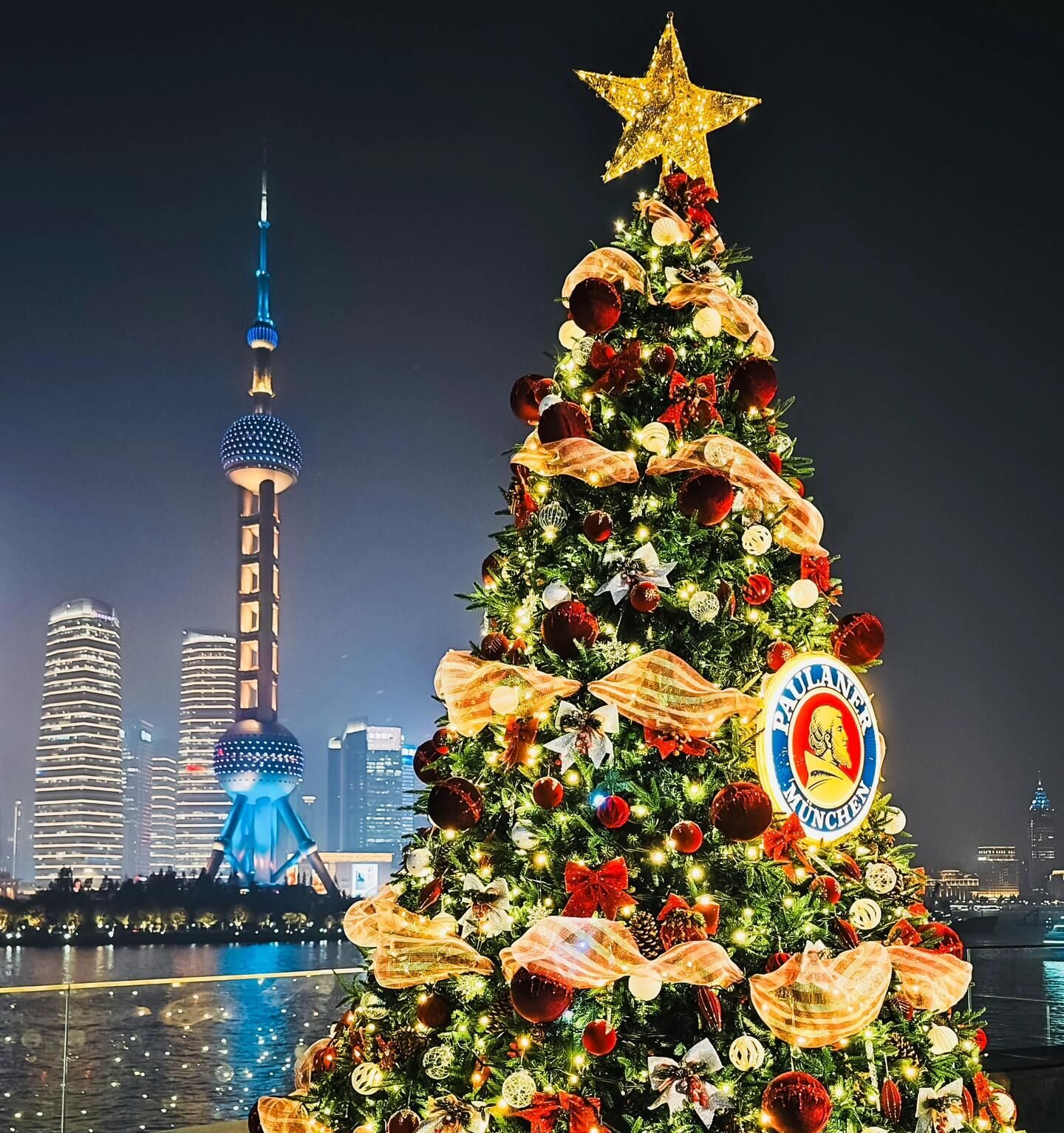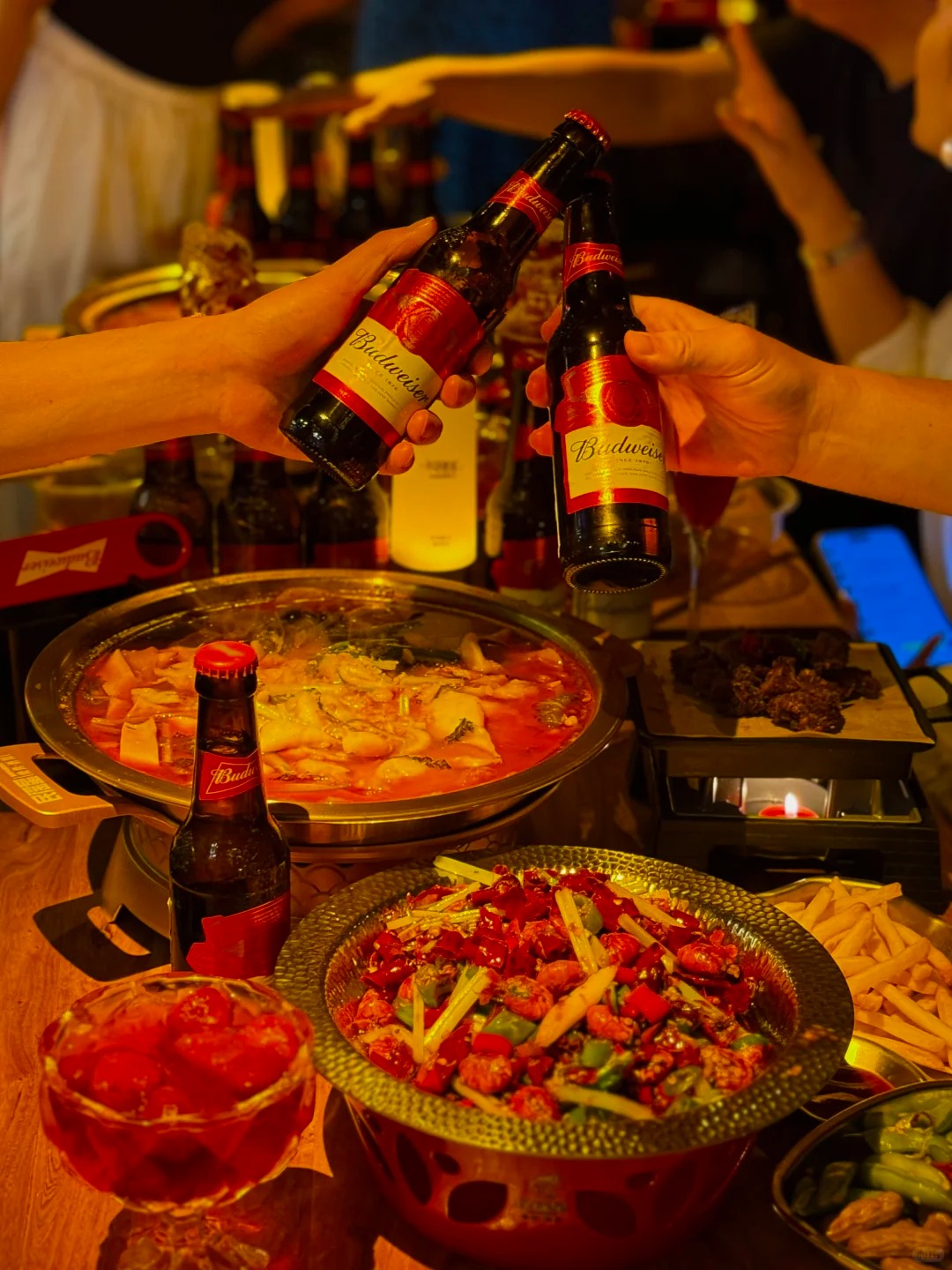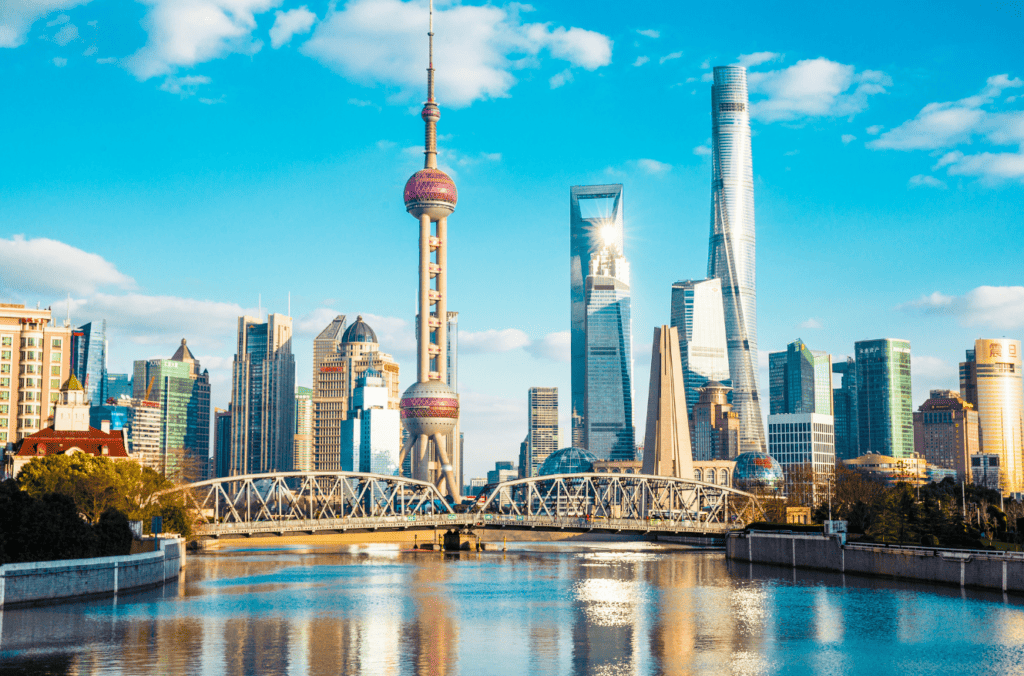
Shanghai
Shanghai is more than a skyline: it’s a stage on which old and new perform together. What makes Shanghai famous leaps forth in its landmarks, its food and its ever-vibrant energy. The Bund, Yu Garden offer visions of empire and art, while Shanghai Tower boldly illustrates how aspiration can reach the sky. Art Deco precincts buzz with cafes, and street food wakes the sun before dawn, filling the air with moisture and soy sauce.
Through soup dumplings you will taste its momentum, in the morning hours you will feel it in jazz, in the neon over the Huangpu River you will see its reflections. From designer shopping centres on Nanjing Road to intimate studios at M50, the contrasts of Shanghai are endless. What makes Shanghai famous is all that it dares to be: modern without denying nostalgia; global yet unmistakably Chinese. Read on to discover why no trip to China is complete without losing yourself in it for some time.
What Is Shanghai Famous For at a Glance
| Aspect | Highlights |
|---|---|
| 🏛️ Iconic Landmarks | The Bund, Yu Garden, Shanghai Tower |
| 🍜 Famous Foods | Xiaolongbao, Shengjianbao, Hongshaorou |
| 🛍️ Shopping Areas | Nanjing Road, Tianzifang, French Concession |
| 🎭 Culture & Art | Jazz clubs, M50 Art Park, People's Park marriage market |
| ☀️ Best Visiting Seasons | April–May, October–November |
| 🚇 Metro Length | 800+ km (world’s longest system) |
Shanghai’s Iconic Landmarks and Their Timeless Appeal
- The Bund
- Yu Garden
- Shanghai Tower & Skyline Views
The Bund – The Symbol of Shanghai’s Global Fame
The Bund has every right to be called Shanghai's most famous waterfront, but not, in my opinion, for the reasons given in all the guide books. The photographs are wonderful and that is why 300,000 people here daily take it in. But what really makes the Bund interesting, is what those 52 historical buildings represent. Each building is an exhibition of desire of colonialism and political power plays in the 1920s and 1930s.
Timing is everything here. I've watched sunrise at 6 AM with just a handful of photographers and elderly locals doing morning exercises—it's almost magical. Return at 8 PM and you'll battle selfie sticks while dodging aggressive souvenir sellers. For the best experience, visit early morning or late night after 10 PM when crowds thin. Skip the pedestrian tunnel with its gimmicky light show that costs 50 yuan, and take the metro instead. The real treasures hide in side streets behind the Bund—atmospheric cafes and craft cocktail bars in renovated heritage buildings you can actually enter.
To walk down the Bund needn't cost you a cent, as the river cruise operators will be all eager to inlet you to any extent from 150-300 yuan, and the only need is to log onto Dianping for prices of 80-120 yuan upward to do the same cruise.
Yu Garden – A Living Bridge Between Ancient China and the Modern City
Yu Garden is a classic example of how Shanghai is a city that preserves the old while building the new. This 400-year-old classical garden occupies only about five acres, but the feeling is like passing through a time-warp. What catches your eye first is not the carefully arranged rocks, nor the koi ponds. It is the way in which the curved lines of the roofs create little areas of total peace in an area of the densest population on the Earth.
Entry is 40 yuan as of 2025. For the best experience, go on Wednesday morning at opening time (8:30 AM) if you can. Weekends mean shoulder-to-shoulder crowding which spoils the peacefulness of the garden.
The surrounding Yuyuan Bazaar is controversial among locals who tend to roll their eyes at it. However, one exception exists: Nanxiang Steamed Bun Restaurant. Expect 30-45 minute waits, but their xiaolongbao are legitimate. Street vendors outside charge 15 yuan for frozen, reheated versions—your stomach will know the difference.
Shanghai Tower & Skyline Views – Architectural Wonders Defining the Future
The height of Shanghai Tower is 632 meters and the price to get access to the observation deck is 180 yuan. This will entitle you to the fastest lift in the world. Experience the popping ears from the acceleration, 55 seconds to the 118th floor. First timers are always startled with the feeling.
I have now been to all three major observation decks (Shanghai Tower, Oriental Pearl, Jinmao) so here is my considered opinion. The main reason one visits Shanghai Tower is the engineering of the 180 yuan lift. The Jinmao Tower is better as far as the views of the city are concerned and it is 120 yuan. The Oriental Pearl is famed for being an odd shape, and the views are negligible, so give it a miss.
One solution is to skip all the observation decks and go to roof top bars instead. Cloud 9 at Jinmao Tower will give you similar views with drink in hand and similar price level. Go at four for the sunset and then watch the nightly light show!
From colonial alleys to futuristic towers, the city never stops revealing itself in Top 10 Tourist Attractions in Shanghai.
Shanghai’s Culinary Fame and Local Food Culture
Must-Try Shanghai Dishes – Classics That Made the City Famous
Shanghai is famous for food that favors sweetness and soy-based sauces—what locals call benbangcai. If you want to get the best information about soup dumplings, you will need to be honest about what an attraction is as opposed to a local favorite. At Nanxiang in Yuyuan, the 48 yuan soup dumplings usually lead to 45-minute waits. Jia Jia Tang Bao has 25 yuan dumplings of much better quality but is also crowded. The difference is in the thinner wrappers and better broth.
Other essential dishes include shengjianbao (pan-fried buns) at Da Hu Chun for just 12 yuan for four buns. Hongshaorou (red-braised pork) varies dramatically in price—Fu 1088 charges 180 yuan while Jesse Restaurant offers comparable quality for 45 yuan. During hairy crab season from October to December, expect to pay 50-300 yuan per crab, with Wang Bao He Restaurant handling all the cracking work for 200-400 yuan per person.
Rather than standing in the tourist xiaolongbao lines, it is better to download the Dianping app. If it is a restaurant with 4.5 stars or above and with hundreds of reviews, you cannot go wrong.
Street Food Adventures – Everyday Flavors That Capture the City’s Spirit
The street level fare is radically different from the sit-down fare in Shanghai. Breakfast items are almost exclusively jianbing in the 8-15 yuan range which are found at sidewalk vendors adjacent to subway entrances and exits. Most vendors are sold out by 8:30. Locals crave out the cifantuan (sticky rice rolls) as much as they do xiaolongbao.
Evening street food centers around Yunnan Road Food Street from 5-8 PM, where aromatic grills fill the air. Chuanchuan (skewers) cost 2-5 yuan per stick, meaning 20 sticks will run under 100 yuan. Stinky tofu lives up to its name with a genuinely pungent smell but crispy exterior. Try it at Yang's Fry Dumpling for 6 yuan for four pieces. Budget 50-100 yuan for a filling street food evening.
The street food scene is devoid of the chaos associated with the street food markets in Southeast Asia. The government unequivocably is concerned with order so that authentic eating at street level necessitates knowledge of local conditions or exploratory visits to outer districts of the city. Many vendors still do not use mobile phone applications for payment so carry cash in small denomination sums.
From Michelin Stars to Hidden Gems – The Evolution of Shanghai Dining
High-end dining in Shanghai includes Ultraviolet with three Michelin stars at 6,000-10,000 yuan per person—questionably worth it. Yi Long Court earned one star for impeccable Cantonese cuisine at 800-1,200 yuan. Fu He Hui, also with one star, serves vegetarian food that surprises even dedicated meat-eaters.
My favorite hidden gems carry no awards but offer authentic experiences. Lao Fan Dian on Julu Road serves home-style Shanghai food with nothing over 40 yuan, surrounded by pensioners who've eaten there for decades. Xiao Yang Sheng Jian makes the best pan-fried dumplings for 15 yuan per basket. Wu Fang Zhai near Yuyuan sells addictive zongzi (sticky rice wrapped in leaves) for 8 yuan each.
Remember that what Shanghai is famous for food-wise often comes from tiny shops with three tables and one cook who's been making the same dish for forty years.
Shanghai’s food tells its own story — one you can truly taste in 2025 Guide to Shanghai Food.
Shanghai’s Shopping Scene from Luxury Malls to Local Markets
- The Nanjing Road
- Plaza 66
- ICICLE
Nanjing Road – The Legendary Street That Defines Modern Commerce
Nanjing Road claims fame as Shanghai's premiere shopping street with 1 million daily visitors, but much of it functions as tourist trap territory. Be aware of the persistent tea ceremony scam where friendly young people approach near tourist areas, claiming to be students wanting to practice English, then guide you to tea houses with bills exceeding 1,000-3,000 yuan. If attractive people approach you speaking excellent English in tourist areas, politely decline. Legitimate friendships don't start this way here.
West Nanjing Road offers luxury malls like Plaza 66 and CITIC Square with international brands. Cosmetics sections sometimes carry Asia-exclusive products worth investigating. Walk Nanjing Road once at night for the spectacular lights, then redirect your energy to more authentic districts.
Tianzifang & French Concession Boutiques – Where Creativity Meets Tradition
Tianzifang gives what Nanjing Road should supply; what its shopping element lacks is its atmosphere and character. Here you can find hand-painted silk scarves priced 200-600 yuan, modern jewelry by local designers, and oddities in the way of home furnishing articles such as are not to be found in the ordinary stores. Come during the week, if you want to avoid the crowd which flocks there on Sundays.
The French Concession offers some unusual shopping experiences. Shokay on Xinle Road deals solely in clothing made of yak wool received from Tibetan herders and can be purchased from 300-2,000 yuan. Platane on Wuyuan road sells authentic Art Deco vintage clothing which may be bought for 500-3,000 yuan. Dongtai Market on Liuhekou Road has reproduction antiques and souvenirs, 80-300 yuan.
When one wishes to bargain, it is customary to offer from three to five times the amount it is thought the vendor will probably accept. Never offer to pay more than 40-50% of what is asked.
The Reality of Replica Markets – From Counterfeits to Original Design
AP Plaza near Science & Technology Museum metro operated for years as Shanghai's premiere fake market. As of 2025, heavy government regulation has shut down many vendors. Be aware that importing counterfeit goods is illegal in most countries, and customs can seize items at borders. Most travelers buying a single bag face minimal consequences, but understand you're participating in illegal commerce.
Better alternatives exist with Chinese domestic brands. Bosie offers quality men's basics without legal concerns. ICICLE provides minimalist design at prices 30-50% below Western equivalents. JNBY focuses on contemporary fashion. What Shanghai is famous for shopping-wise increasingly means original Chinese design rather than knockoff Western brands.
If Shanghai’s shopping scene already dazzled you, wait till you see Cloud Nine Shanghai Shopping & Dining Guide.
Hidden Corners and Cultural Depth Beyond the Tourist Trail
- Sinan Books
- JZ Club
- M50 Creative Park
Hidden Shanghai – Local Spaces That Reveal the City’s Soul
What to do in Shanghai beyond standard circuits requires local knowledge. Every morning from 6 AM onward, People's Park hosts a marriage market where anxious parents display laminated resumes of their unmarried adult children. These lists include education, salary, and home ownership status. The scene is simultaneously heartbreaking and fascinating, reflecting what Shanghai is famous for socially: the highest divorce rates and latest marriage ages in China.
Suzhou Creek offers 42 kilometers of waterway cutting through the city center. Rent bikes via Meituan or Alipay for 1.5-3 yuan per 30 minutes. Wednesday through Friday evenings see fewer crowds. The route passes working-class neighborhoods showing authentic urban life beyond polished tourist zones.
Dongjiadu Fabric Market features floor-to-ceiling fabric bolts at wholesale prices. Custom suits cost 800-1,500 yuan while custom dresses run 300-600 yuan. Zero English is spoken here, but the chaos is worth navigating. South Bund Fabric Market caters to foreigners with higher prices and English speakers, but Dongjiadu maintains authentic wholesale energy.
Off-the-Beaten-Path Culture – Art, Music, and Stories Beneath the Surface
Independent bookstores offer respite from tourist crowds. Dajing Bookstore in the old city integrates into a Ming temple complex with limited English sections. Sinan Books on Fuxing Road occupies a 1920s mansion with excellent literary selections and English books. Zhongshuge in Minhang features mirror-ceiling design but draws Instagram crowds.
Shanghai's underground music scene thrives at venues like JZ Club in the French Concession, offering nightly jazz for 80-200 yuan cover charges. YYT/Yuyintang near Zhongshan Park hosts indie rock and electronic acts with tickets costing 80-150 yuan. Shows start late at 9-10 PM and attract genuine music fans rather than Instagram crowds. M50 Creative Park, now is a government-sanctioned art district featuring exposed brick and steel beams. Entry is free, with galleries open Tuesday through Sunday.
Shanghai Circus World presents world-class acrobatics nightly at 180-680 yuan. The performances are genuinely impressive rather than cultural tourism theater. Check SmartShanghai website for current events, as the cultural scene changes monthly.
Surprising Facts That Define Modern Shanghai
Shanghai earned the nickname "Magic City" or "Modu" long before Communist China—it originated in a 1924 Japanese novel describing Shanghai's ability to transform people through its intoxicating mix of opportunity and vice. The name stuck because it captures something essential: Shanghai changes people.
The metro system extends over 800 kilometers—longer than New York, London, or Paris. Daily ridership exceeds 10 million passengers. That drilling noise at night? New tunnels are being bored 20 meters below ground while you sleep.
Shanghai dialect is mutually unintelligible with Mandarin—they're completely different languages. But it's disappearing rapidly. Young Shanghainese under 30 speak it poorly, representing broader tensions as Shanghai's distinct local culture erodes while becoming more nationally Chinese and internationally cosmopolitan.
The city boasts over 8,000 cafes as of 2024—more per capita than any Asian city. This coffee obsession reflects Shanghai's work culture: long hours, constant networking, and performance-oriented lifestyle. Understanding Shanghai's coffee culture means understanding its people—ambitious, cosmopolitan, and running on caffeine.
Shanghai’s real stories often start after sunset — find them in 10 Shanghai Bars.
Essential Travel Insights for Visiting Shanghai
Weather and Best Visiting Times – Seasons That Shape the Experience
The ideal months for visiting are April–May and October thru November with temperatures of 15–25 degrees Celsius, moderate humidity, and clear skies. However, these months coincide with peak tourist time and Chinese holidays creating the worst type of crowding.
June through August sees temperatures exceeding 35°C with brutal humidity and meiyu (plum rain) season bringing weeks of constant drizzle. December through February ranges from 0-5°C, offering fewer tourists but cold, damp conditions with no central heating. Winter sees worst air pollution—check AQI forecasts and limit outdoor activities when readings exceed 150.
You should have good walking shoes, layered clothing for all seasons, (the indoor air conditioning is fierce) a light jacket even in the summer and wet weather gear if you are visiting June thru July.
Getting Around – The Metro, Maglev, and Movement of the City
Shanghai's transportation network perfectly captures the city's efficiency and speed. Getting around is straightforward if you know your options. Here's a quick overview to help you navigate from your first metro ride to that lightning-fast Maglev trip from the airport.
| Mode | Cost (RMB) | Key Info | Travel Time |
|---|---|---|---|
| Metro | 3–10 | Use the Shanghai Public Transportation Card (20 RMB deposit) for small discounts; Metro Daduhui app provides QR codes. | Depends on distance |
| Taxi | 14 base + 2.5/km | Few drivers speak English. Use Didi (China’s Uber) for reliability; requires Chinese SIM (50–100 RMB). | Variable |
| Maglev Train | 50 | Reaches 431 km/h from Pudong Airport to Longyang Road; thrilling but not central. | 8 minutes |
| Metro Line 2 (Airport to City) | 7–8 | Best budget option connecting directly to downtown. | 60–75 minutes |
Download Baidu Maps or Gaode Maps—Google Maps doesn’t function in China. Once you get the hang of Shanghai’s system, you’ll realize it’s not just transport—it’s part of the adventure.
Safety and Common Scams – Navigating Shanghai with Confidence
Shanghai ranks among the world's safest major cities. Solo female travelers rarely report serious problems. Common scams to avoid include the tea ceremony trick where friendly "students" invite you to tea with bills hitting 3,000-10,000 yuan. Art students push overpriced paintings in fake galleries. Bar girls work with establishments to inflate drink bills around the Bund area.
The golden rule: if attractive people approach you speaking excellent English in tourist areas claiming to be students—politely decline. Legitimate friendships don't start this way here.
For medical needs, international hospitals like Shanghai United Family and Parkway Health charge 1,000-1,500 yuan for consultations. Public hospitals cost much less at 30-100 yuan but require Chinese language skills. Emergency numbers are 110 for police, 120 for ambulance, and 119 for fire. Travel insurance is essential—ensure it covers China specifically.
Frequently Asked Questions About Shanghai
Q: What surprised me most about Shanghai at night?
I remember being stunned by Shanghai’s skyline along the Bund and Lujiazui. It truly felt like walking through a sci‑fi movie when the lights reflected off the Huangpu River. I spent hours between rooftop bars, jazz clubs, and night cruises—each showing a different side of what Shanghai is famous for after dark. Even locals I met said they never get tired of that nightly glow.
Q: Why do I now understand why people call Shanghai the “Magic City”?
I kept hearing locals use the word “Modu,” meaning Magic City, and it clicked after a few days here. The way the 1920s Art Deco buildings blend with futuristic towers defines what Shanghai is famous for—the balance of timelessness and progress. I even saw the name printed on souvenirs and billboards, proof that the nickname lives in the city’s soul.
Q: What impressed me most about Shanghai’s skyline?
Honestly, the skyline itself answers the question of what Shanghai is famous for. The Oriental Pearl, Jinmao, and Shanghai Tower look like monuments to ambition. The contrast with the colonial Bund feels cinematic, especially from the deck of a riverboat—it’s like drifting through a futuristic dream.
Q: Why can’t I stop talking about Shanghai food?
The meals that amazed me didn’t come from fancy restaurants but small kitchens. Soup dumplings, red‑braised pork, and shengjianbao are the heart of what Shanghai is famous for food‑wise. Locals debate endlessly about who makes them best, and joining that search became my favorite adventure. I still remember one chef kneading dough at dawn, hands moving like rhythm.
Q: What cultural side of Shanghai fascinated me the most?
It was the way Shanghai mixes Chinese roots with global creativity. It’s famous for fashion, film, and coffee—so much coffee. That artistic pulse pulls in dreamers and travelers alike. I spent hours in M50 where graffiti and fine art collide, realizing that culture here never stands still.
Q: How did I find Shanghai’s shopping scene?
It honestly blew my mind. From luxury malls on Nanjing Road to handmade designs in Tianzifang, shopping captured what Shanghai is famous for—its mix of taste and innovation. I was surprised to see local Chinese brands matching Western quality. One pop‑up I visited closed within hours, and I still regret not buying that jacket.
Q: Which Shanghai neighborhoods did I love exploring most?
The French Concession, Jing’an, and Xintiandi completely won me over. They show the everyday charm of what Shanghai is famous for—leafy streets, shikumen houses, and lively cafes. On quiet mornings, I’d walk with a coffee in hand, catching the scent of jasmine floating from balconies.
Q: Why does Shanghai feel so different from other Chinese cities to me?
Because it just does. What Shanghai is famous for isn’t only its skyline—it’s the pulse you feel in your chest. The city moves fast, dreams loud, and never stops shifting. From the moment I landed, I felt its rhythm, and when I left, part of me stayed behind.
